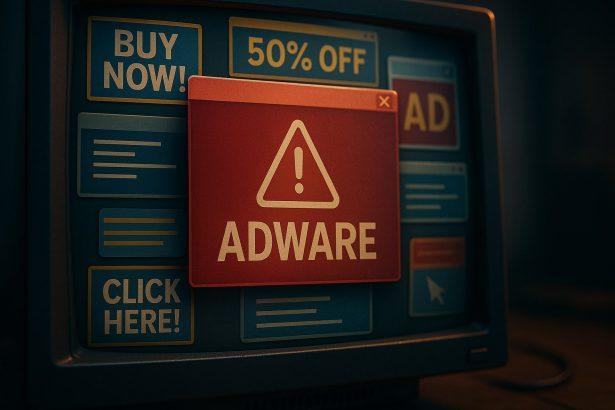Coliatang.com is a deceptive website that tricks users into subscribing to intrusive browser notifications. Once permission is granted, it floods the screen with unwanted pop-up ads, redirects, and potentially harmful content. This behavior categorizes Coliatang.com as both a browser hijacker and an adware threat, capable of degrading system performance and compromising user privacy.
Threat Overview
Coliatang.com leverages social engineering tactics, often pretending to show a CAPTCHA test or a video player, asking users to click “Allow” to proceed. This seemingly harmless action activates the push notification service in your browser, enabling the site to send spam notifications 24/7—even when the browser isn’t actively in use.
Threat Details
| Attribute | Details |
|---|---|
| Threat Type | Browser Hijacker, Adware, Push Notification Spam |
| Associated Domains | coliatang.com, usfna5iboc.coliatang.com, hyjecr.coliatang.com, usus8we8du.coliatang.com, usussyntyd.coliatang.com, ususwfydd5.coliatang.com, usxslpe8d5.coliatang.com, usxswhirk2.coliatang.com |
| Detection Names | Not specified |
| Symptoms of Infection | Persistent pop-up ads, browser redirects, sluggish browser behavior, unwanted desktop notifications |
| Damage | Phishing exposure, possible malware infections, reduced browser performance, compromised browsing experience |
| Distribution Methods | Fake CAPTCHA prompts, malicious ads, deceptive websites, bundled free software |
| Danger Level | Medium |
| Removal Tool | SpyHunter |
In-Depth Analysis
How Did I Get Infected?
You may have encountered Coliatang.com after interacting with:
- Misleading pop-ups on unsafe or torrent websites
- Bundled installations from free or pirated software
- Suspicious browser extensions
- Malicious links embedded in online ads or video players
- Fake CAPTCHA challenges prompting you to click “Allow”
These deceptive techniques exploit the browser’s built-in notification feature, allowing Coliatang.com to send ads directly to your desktop or mobile device.
What Does It Do?
Once activated, Coliatang.com pushes endless ads directly to your notification center. These may include:
- Clickbait news headlines
- Phishing scam alerts
- Fake system update prompts
- Links to download questionable software
- Redirects to tech support scams or adult content
These notifications can result in more malware being installed or further adware campaigns being triggered.
Should You Be Worried?
Yes, especially if:
- You are receiving persistent and unsolicited pop-ups even when not browsing.
- You are redirected to shady websites.
- You’ve unknowingly installed other potentially unwanted programs (PUPs).
Though not destructive like ransomware, Coliatang.com is a gateway for more dangerous infections, phishing attacks, and privacy breaches.
Manual Removal Guide for Browser Hijackers
Step 1: Uninstall Suspicious Programs (Windows & Mac)
Before resetting your browser, remove any software that may have installed the hijacker.
Windows (10, 11, 8, 7)
- Press
Win + R, typeappwiz.cpl, and hit Enter. - Find Unwanted Applications
- Look for recently installed programs that seem suspicious (e.g., “EasySearch,” “QuickFind,” “Search Manager”).
- Uninstall
- Click on the suspicious program > Select Uninstall > Follow on-screen instructions.
Mac (macOS Ventura, Monterey, Big Sur, Catalina, Mojave, etc.)
- Open Finder and go to Applications.
- Look for unknown or unwanted programs.
- Drag any suspicious apps to the Trash and empty the Trash.
Step 2: Remove Browser Hijacker from Web Browsers
Google Chrome
- Reset Chrome to Default Settings
- Open Chrome > Click ⋮ Menu (top-right corner) > Settings.
- Scroll down and select Reset settings > Click Restore settings to original defaults > Confirm.
- Remove Suspicious Extensions
- Open chrome://extensions/ and remove unknown extensions.
- Change Default Search Engine & Homepage
- Go to Settings > Search engine > Select Google or another trusted search engine.
- Under On Startup, remove any unwanted URLs.
Mozilla Firefox
- Reset Firefox
- Click the Menu (☰) > Select Help > Click More Troubleshooting Information > Refresh Firefox.
- Remove Unknown Extensions
- Open Add-ons Manager (
Ctrl + Shift + A) > Remove any suspicious extensions.
- Open Add-ons Manager (
- Change Search Engine & Homepage
- Open Settings > Search > Choose Google or another safe search engine.
Microsoft Edge
- Reset Edge
- Click ⋮ Menu > Settings > Reset settings > Restore to default values.
- Remove Unwanted Extensions
- Open edge://extensions/ and remove any unfamiliar extensions.
Safari (Mac Only)
- Reset Safari & Clear Data
- Open Safari > Click Safari (top-left menu) > Select Clear History.
- Go to Preferences > Privacy > Click Manage Website Data > Remove All.
- Delete Suspicious Extensions
- Open Safari > Preferences > Extensions > Remove anything unfamiliar.
- Change Homepage & Search Engine
- Open Preferences > General > Change your homepage to a trusted site.
- In Search, set your search engine to Google or a preferred option.
Step 3: Check for Unauthorized System Changes
Windows – Check the Hosts File
- Open Notepad as Administrator (
Win + S, type Notepad, right-click, Run as Administrator). - Click File > Open and navigate to:makefileCopyEdit
C:\Windows\System32\drivers\etc\hosts - If you see unknown IPs or URLs at the bottom, remove them.
- Save changes and restart your computer.
Mac – Check the Hosts File
- Open Terminal (
Command + Space, typeTerminal). - Type:bashCopyEdit
sudo nano /etc/hosts - Look for suspicious entries and delete them.
- Press
Ctrl + X, thenY, thenEnterto save.
Automatic Removal Using SpyHunter (Windows & Mac)
For those who prefer a quick, hassle-free removal process, using SpyHunter is highly recommended.
Step 1: Download SpyHunter
Click here to download SpyHunter: Download SpyHunter
Step 2: Install & Run SpyHunter
- Follow the instructions on the SpyHunter Download Page to install the software.
- Open SpyHunter and run a full system scan.
Step 3: Remove Browser Hijackers
- SpyHunter will detect all malware and potentially unwanted programs.
- Click Fix Threats to remove the detected hijacker.
- Restart your device to complete the cleanup process.
Step 4: Reset Browser Settings (If Necessary)
Even after SpyHunter removes the hijacker, you may need to reset your browser settings manually (refer to browser-specific instructions above).
Preventing Future Browser Hijacker Infections
- Be cautious when installing free software – opt for Custom Installation to avoid bundled malware.
- Avoid clicking on suspicious ads or pop-ups – they often distribute browser hijackers.
- Keep your operating system and software updated – outdated programs are more vulnerable to infections.
- Use a trusted anti-malware tool like SpyHunter to provide real-time protection against threats.
Conclusion
Coliatang.com is more than just an annoyance—it's a browser hijacker and adware source that can lead to major security issues over time. Its deceptive use of browser notifications is a growing trend among low-grade cyber threats. Eliminating this problem requires a robust security tool. We recommend using SpyHunter to detect and remove Coliatang.com-related files and reset browser settings to ensure long-term protection.




